Big, very big and really impressive is the Palacio Real, the Royal Palace of Madrid. The palace is one of the most important sights in Madrid and countless people visit the building every day.
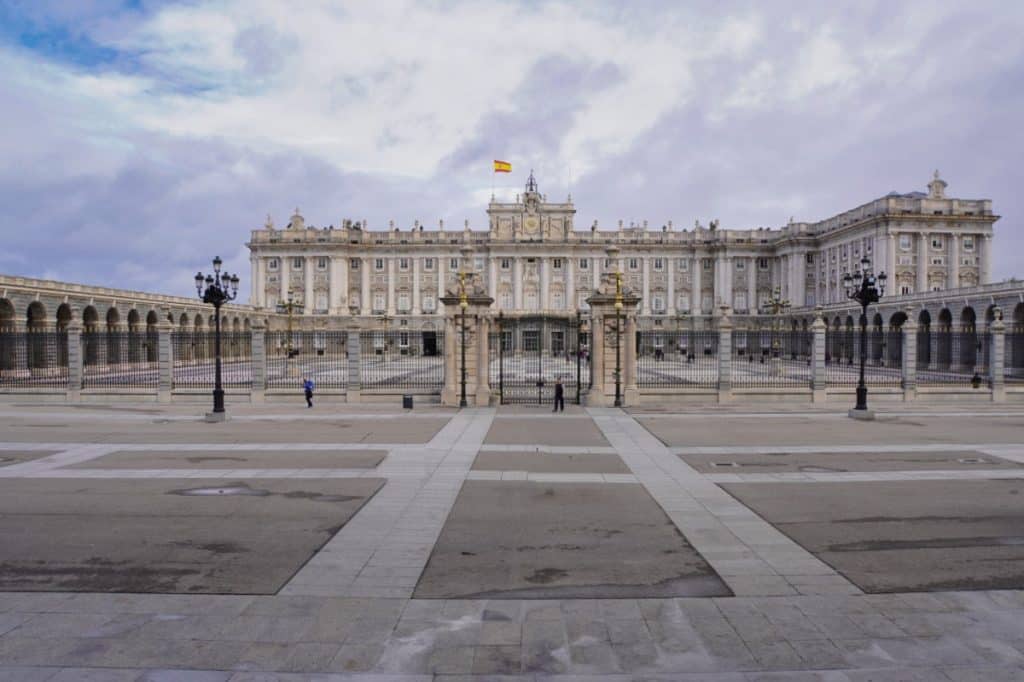
We had booked our tickets in advance via Get your Guide and when we arrived at the palace, I was very happy with this decision. At the small entrance door there was a long queue of visitors who did not yet have a ticket and a second very short queue of visitors who did have a ticket. The tickets are issued with certain time slots and within this time we were able to pass through security without having to wait. Visitors without a ticket are then admitted according to “free seats” – there is a maximum number of visitors. So if it’s already quite full, it can take a while…
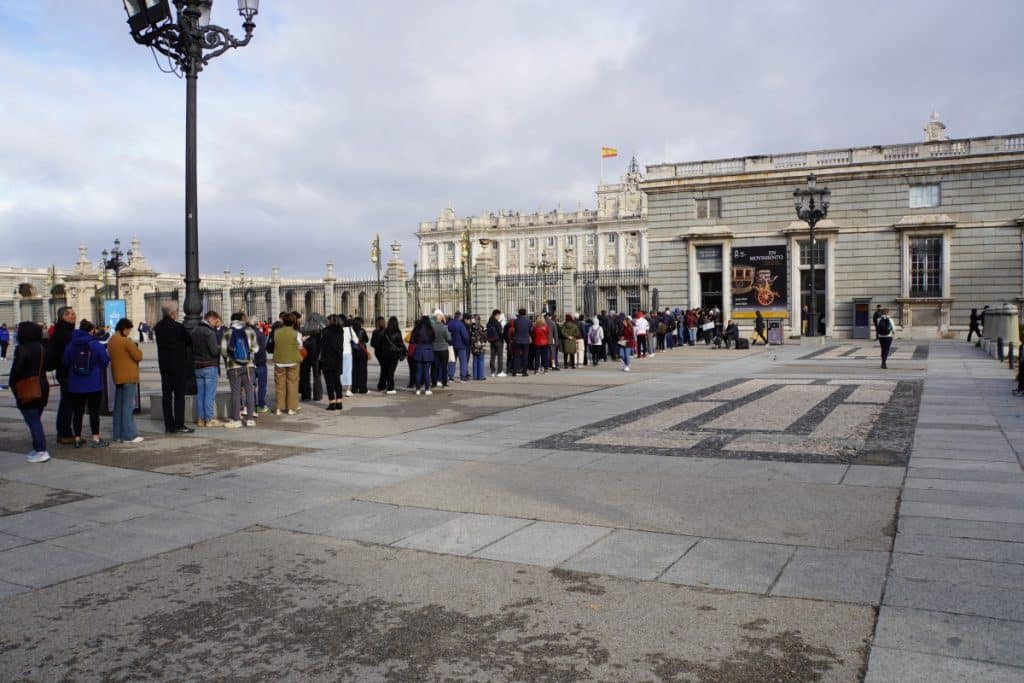
Once we had passed through security, we were able to go on a discovery tour of the Palacio Real.
The birth of a palace
Until the 18th century, there was a Moorish Alcázar on the site where the Royal Palace stands today. The building was also used as a residence by the Spanish kings for many years. In 1734, on Christmas Eve, a fire destroyed the Alcázar.
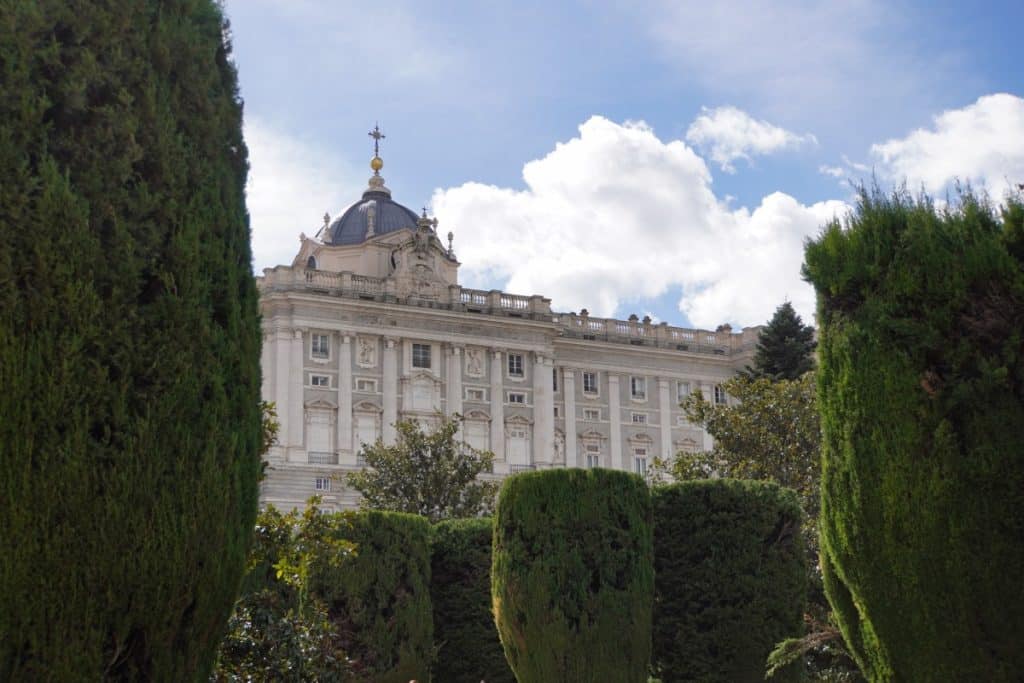
The period around 1730 was not an easy time in Spain. Less and less revenue was flowing in from the colonies and the War of the Spanish Succession left much uncertainty in the country. King Philip V had not been in power for long at this time. He decided to have a new palace built to express his power and strength. Many buildings in Europe that he looked at came close to what he wanted and so he commissioned architect Filippo Juvarra to design a similar building. The architect died during the planning phase and one of his students took on the task. As the Alcázar had burnt down in the meantime, it was decided to use this building site. The plans had to be adapted to the local conditions.
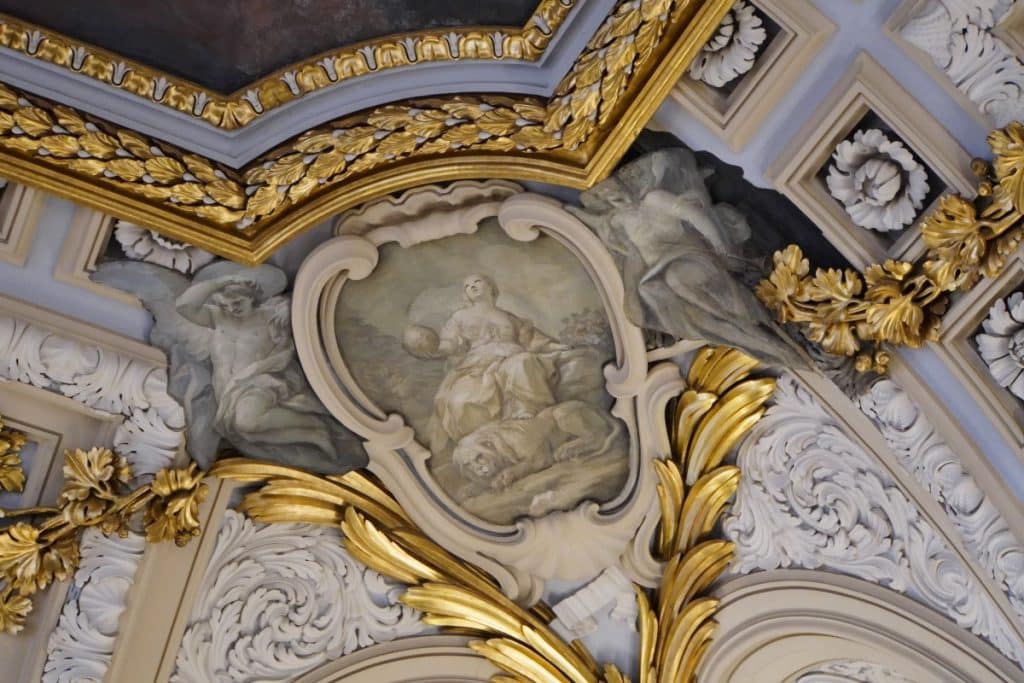
It took until 1764 for the four-winged complex to be completed and only King Charles III was able to move into the rooms with his family. The royal palace has a floor area of 135,000 square metres. Around 3,418 rooms are available.
Palacio Real – what a building!
As we stand in front of the palace, the first thing we notice is the huge courtyard of honour. In the morning, about 10 minutes before it opened to visitors, this place was wonderfully empty and quiet. Only a short time later, visitors were strolling across the square and conquering the palace.
Of course, we also stood on this square and admired the magnificent baroque building with its Italian Renaissance influences. It’s not just the façade that impresses. It is the “little things” such as the lamps or the long arcades that I particularly liked.
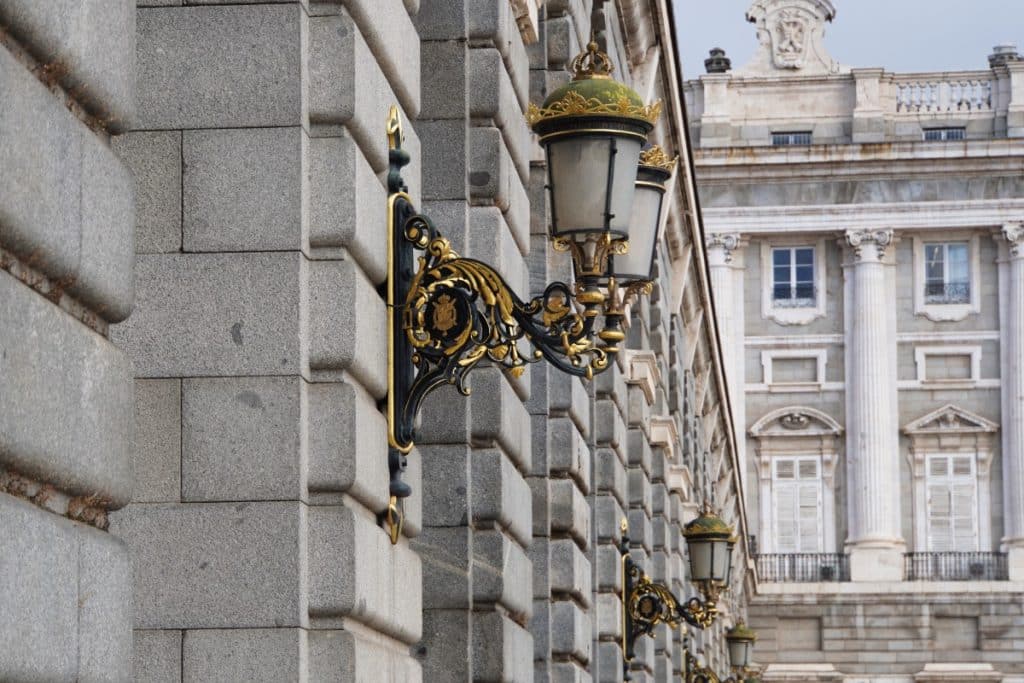
You can now start your tour of the palace from the Court of Honour.
Royal armoury
We were first drawn to an area often overlooked by many visitors, the Royal Armoury. This is located in one of the side wings of the Palacio Real. It can be visited with a normal admission ticket.
As in most areas of the palace, photography is prohibited in these rooms and it was very strictly enforced that we stowed all cameras and mobile phones in our bags.
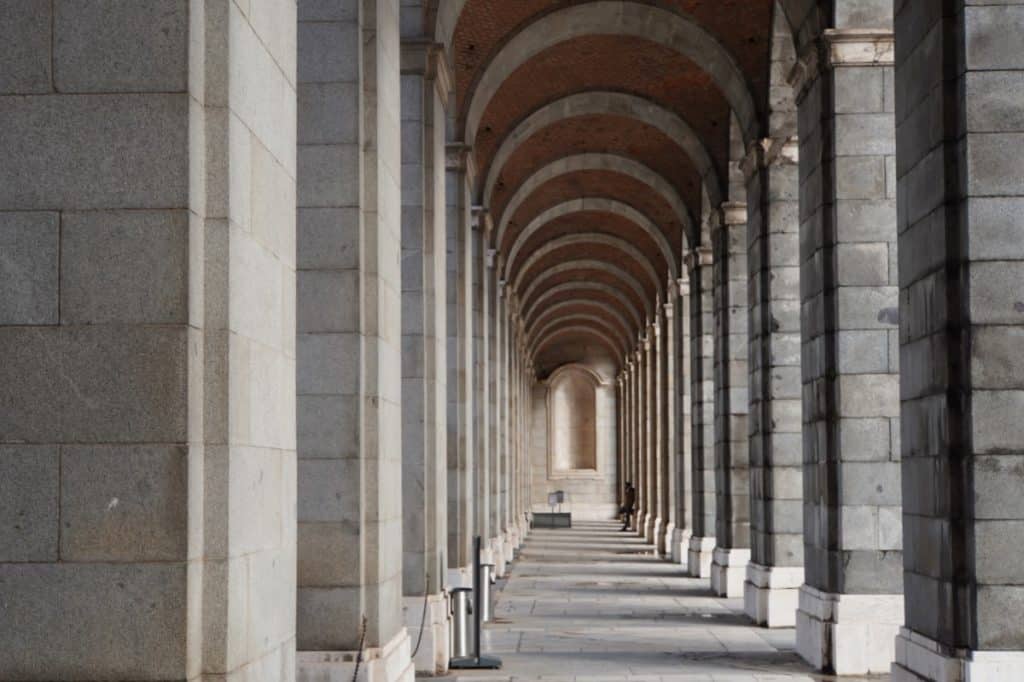
The weapons collection in the Royal Palace (Real Armería) in Madrid offers a comprehensive overview of Spain’s military history and the development of weapons technology.
Particularly fascinating are the personal weapons and armour of the Spanish monarchs, including swords, lances and halberds, which were used in decisive historical battles. It’s amazing to see the armour worn by the kings of the time, which would fit children today.
For example, we discover the armour of Emperor Charles V and the armour of Philip II, which was designed for ceremonies and battles. I also found the swords of the Catholic kings Ferdinand II of Aragon and Isabella I of Castile very exciting. The collection also includes a variety of firearms, including early arquebuses and muskets, which show the development of firearms and their increasing importance in warfare.
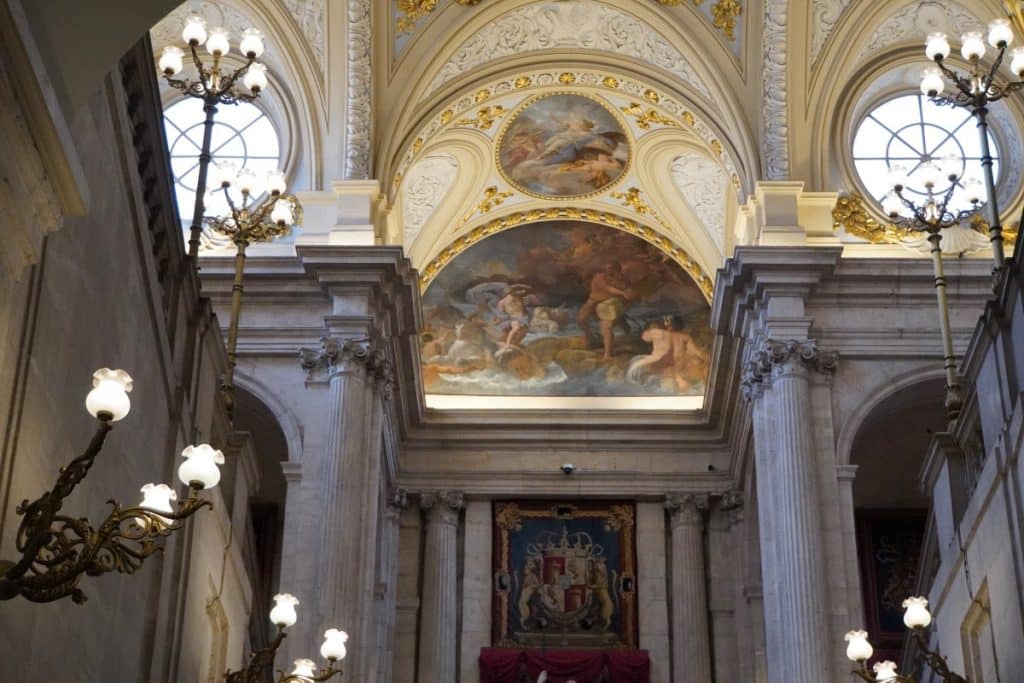
Tour of the castle
The entrance to some of the rooms in the castle can be reached through the entrance in the centre of the building. Here, tickets are checked once again before we climb a grand and imposing marble staircase to the first floor. The main staircase, designed by Sabatini, has more than 70 steps and is definitely the place where visitors stand the longest. You are allowed to take photos here and it is mainly the Spaniards who queue up in front of some of the pictures to take a selfie.
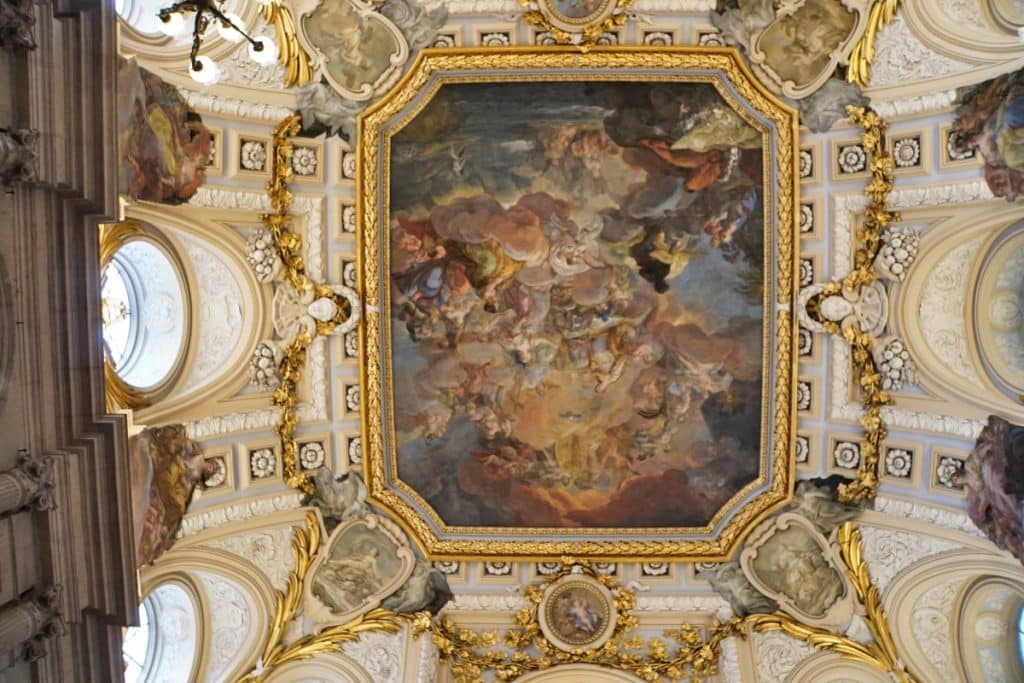
I was much more impressed by the beautiful ceiling painting and the statues. It all looks so magnificent, the only thing missing is the king, who strides gracefully down the stairs to receive his state visitor.
Once at the top, the tour begins through some of the rooms of the palace. Once again, photography is prohibited and the staff keep a very close eye on whether anyone takes out their camera or mobile phone.
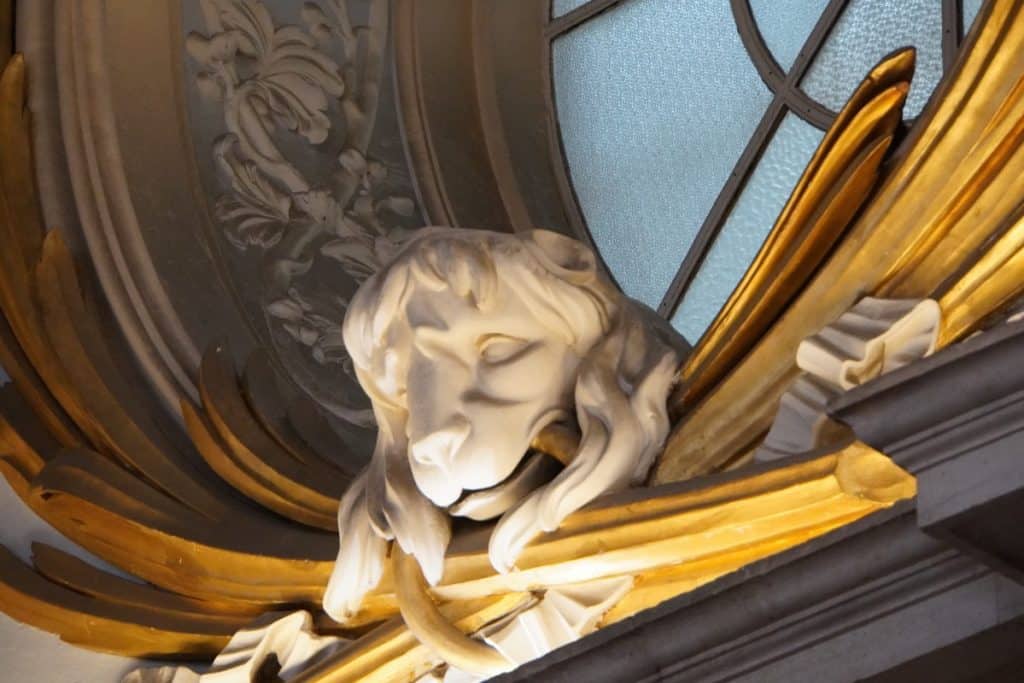
I remember some of the rooms very well after the tour.
The throne room
The most important room in any palace is definitely the throne room. It is still used for official ceremonies today. The two royal, velvet-covered throne chairs are also located here.
The hall is decorated with frescoes by the Venetian painter Giovanni Battista Tiepolo (1696-1770). Twelve magnificent mirrors make the room appear much larger. Several bronze sculptures and chandeliers as well as four extremely valuable clocks are eye-catching.
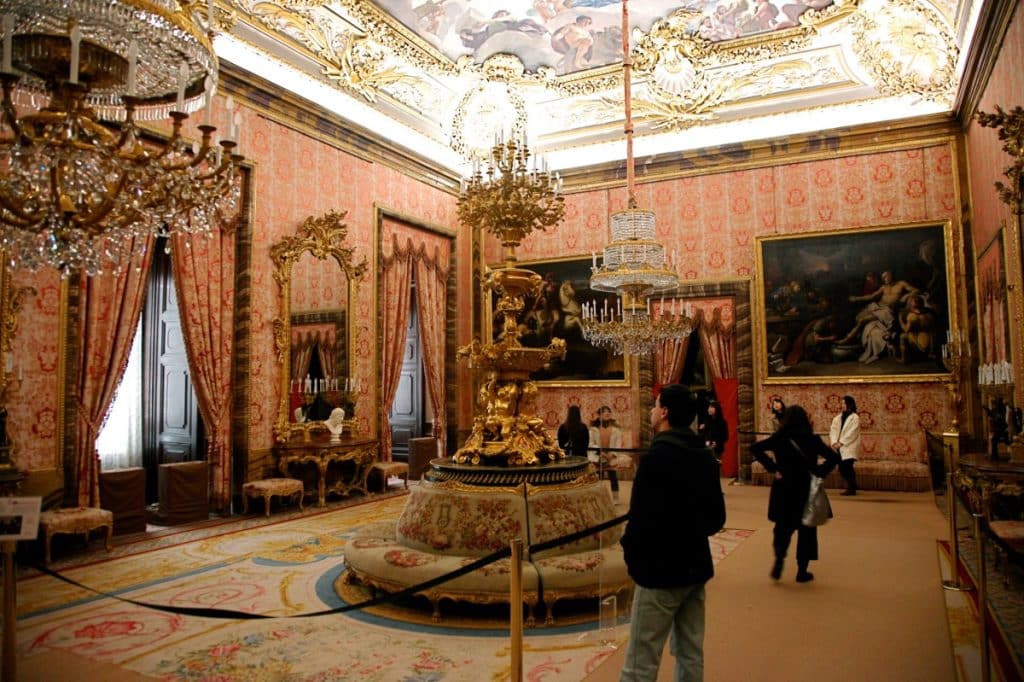
Salón de Gasparini
The Salón de Gasparini was designed by the Italian architect Matías Gasparini. It is designed in the late baroque style. I particularly like the beautiful stucco ceilings and the elegant marble floor.
Gabinete de Porcelana
I think every palace and every tour leads through a room full of porcelain. In the porcelain cabinet of the Palacio Real, however, there is not only valuable crockery on display. Here, even the ceiling and walls are made of the “white gold”.
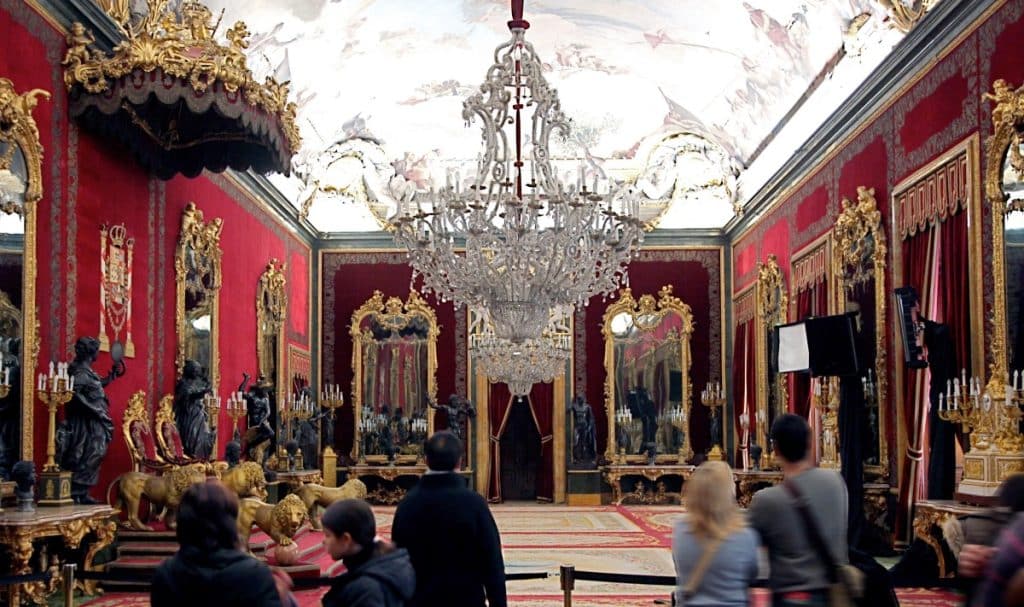
Comedor de Gala
If you need a festive table for around 140 people, you need a very large room. The dining room in the Royal Palace in Madrid is impressive. Huge chandeliers hang from the ceiling and beautiful tapestries adorn the room.
Castle park
If you’re still in the mood after visiting the castle, you should definitely take a look in the castle park. The visit is free of charge.
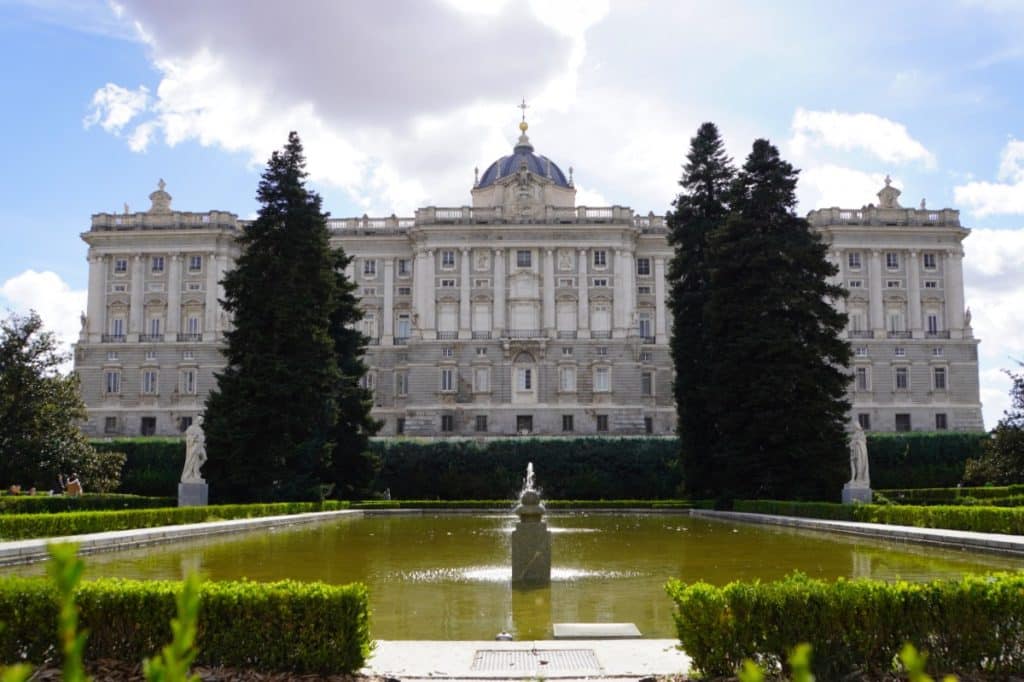
The park is designed in the Baroque style. The trimmed hedges and parterres adorning the “Sabatini Gardens” are characteristic. From here you have a beautiful view of the “back” of the palace.
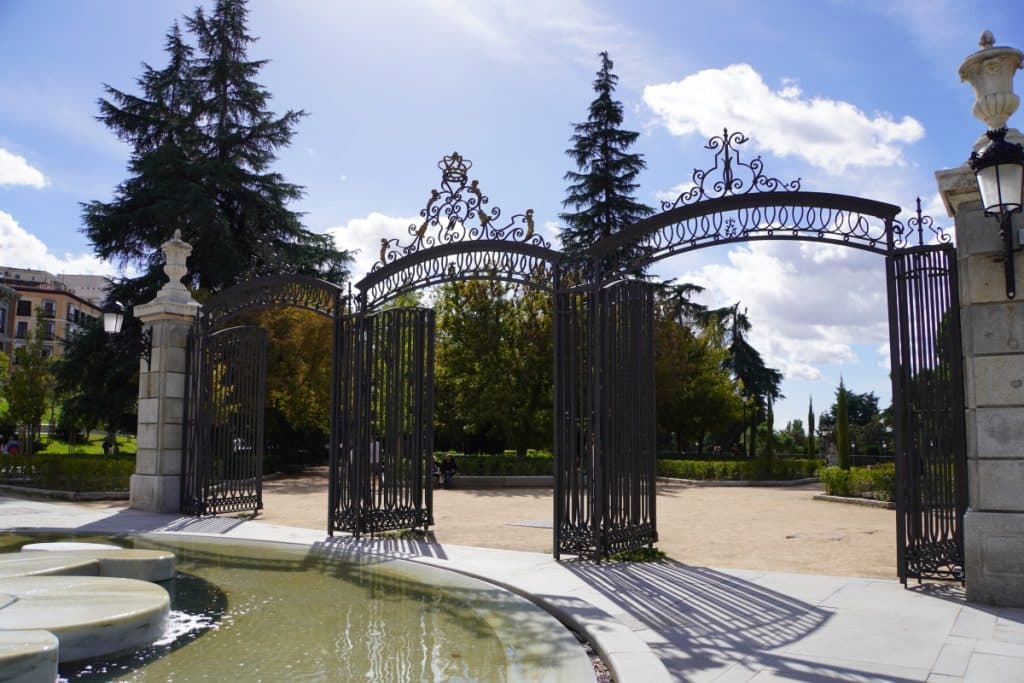
Tip: Changing of the guard
Every Wednesday and Saturday at 11:00 a.m., the palace guards change every half hour in front of the Puerta del Príncipe (Prince’s Gate).
Two guards on foot in their blue, white and red gala uniforms are accompanied by the sound of flutes and drums. The palace guards follow orders and instructions from their superiors.
In addition, the mounted guards march along the façade every 10 minutes (not at the same time as the guards on foot).
On the first Wednesday of every month (except January, August and September), the music corps plays the prelude to the Royal Guard’s ceremonial roll call. Flutes and drums set the pace, while the soldiers take over with their rifles shouldered.
Eine Parade der Lanzen- und Hellebardenträger, Schießtrupps und Soldaten – Männer und Frauen – mit Artilleriegeschützen und Munitionskarren. Zeigen eine spektakuläre Inszenierung des Appells wie zu Zeiten der Könige Alfons XII. und Alfons XIII..
Die Wachablösung und der feierliche Apell finden nicht an Tagen mit offiziellen Veranstaltungen oder widrigen Wetterbedingungen statt.
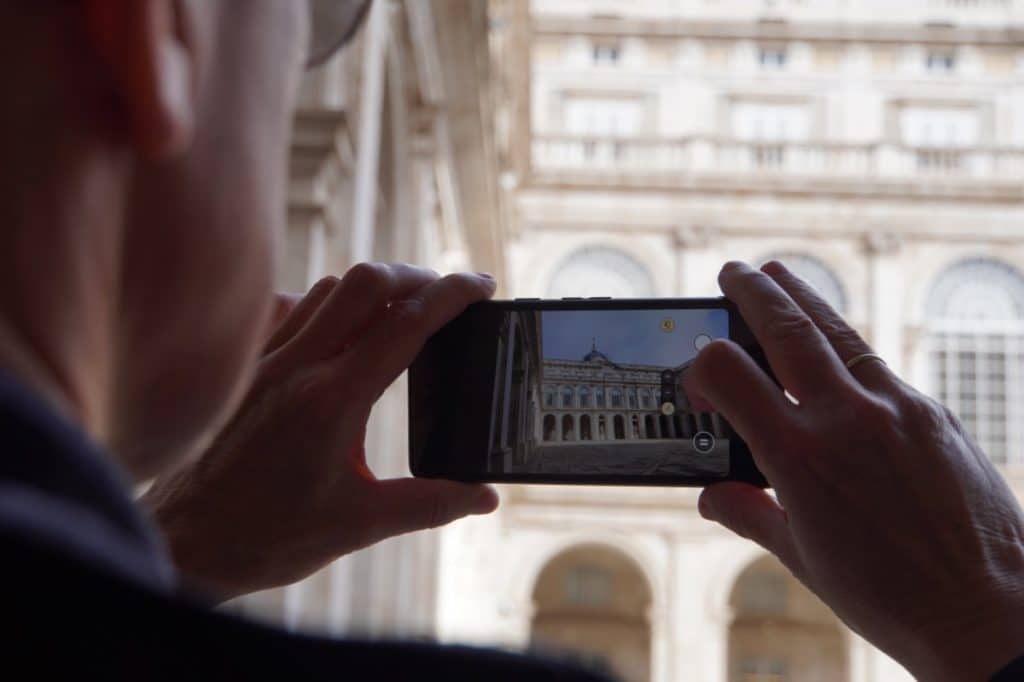
Visitor information:
Address:
Palacio Real de Madrid
Calle de Bailén, s/n, Madrid, 28071
How to get there
Metro
Station Ópera: L2, L5
Station Plaza de Españ: L2, L3, L10
Bus
The following lines stop nearby:
3, 25, 39, 46, 62, 75, 138, 148, C1, C2, SE712, N16, N18, N19, N20
Entrance fees
Without guided tour
Adults 14,-€
Palace + Gallery of the Royal Collections
Adults 24,-€
The booked time slot is valid for the visit to the Royal Palace. The ticket for the Royal Collections Gallery is valid for 7 days from the visit to the Royal Palace of Madrid and cannot be used during the free opening hours from Monday to Thursday from 6.00 pm to 8.00 pm.
Guided tour in English
Adults: 20,-€
Discounts are offered.
ATTENTION free admission to the Palacio Real on the following dates:
18 May, International Museum Day
12 October, National Festival of Spain
Monday to Thursday from 17:00 to 19:00. (16:00 to 18:00 in winter), free admission for citizens of the European Union (proof must be provided)
Opening Hours
Palace:
Winter opening hours (October to March):
Monday – Saturday: 10 am – 6 pm (last admission at 5 pm)
Sunday / public holidays: 10 a.m. – 4 p.m. (last admission at 3 p.m.)
Summer opening hours (April to September):
Monday – Saturday: 10 a.m. – 7 p.m. (last admission at 6 p.m.)
Sunday / public holidays: 10 a.m. – 4 p.m. (last admission at 3 p.m.)
Gardens:
Monday – Sunday and public holidays: 10 a.m. – 8 p.m.
Closed on
1 Jan, 6 Jan, 1 May, 24 Dec (from 3pm), 25 Dec, 31 Dec (from 3pm)
There may be other times when the facility cannot be visited due to official events.

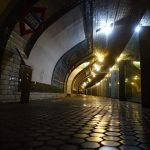
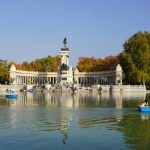
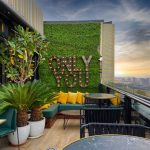
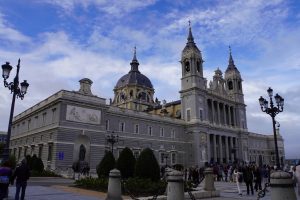
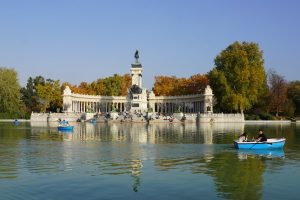
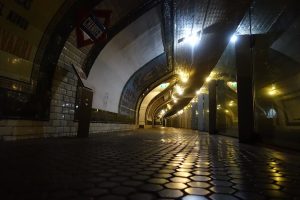
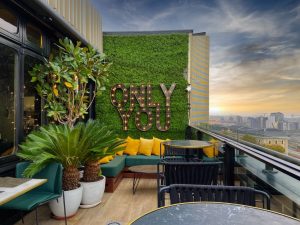
Leave a Reply